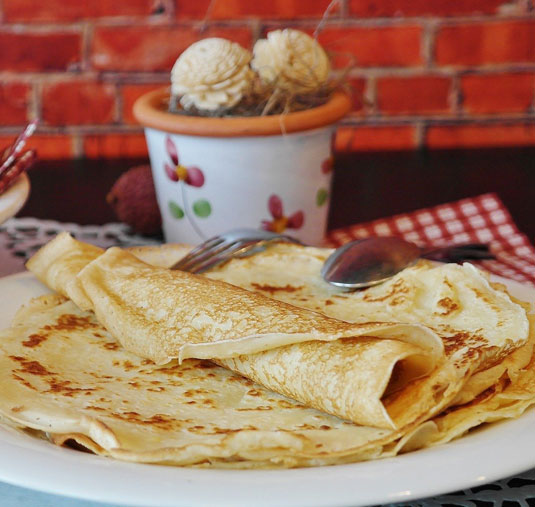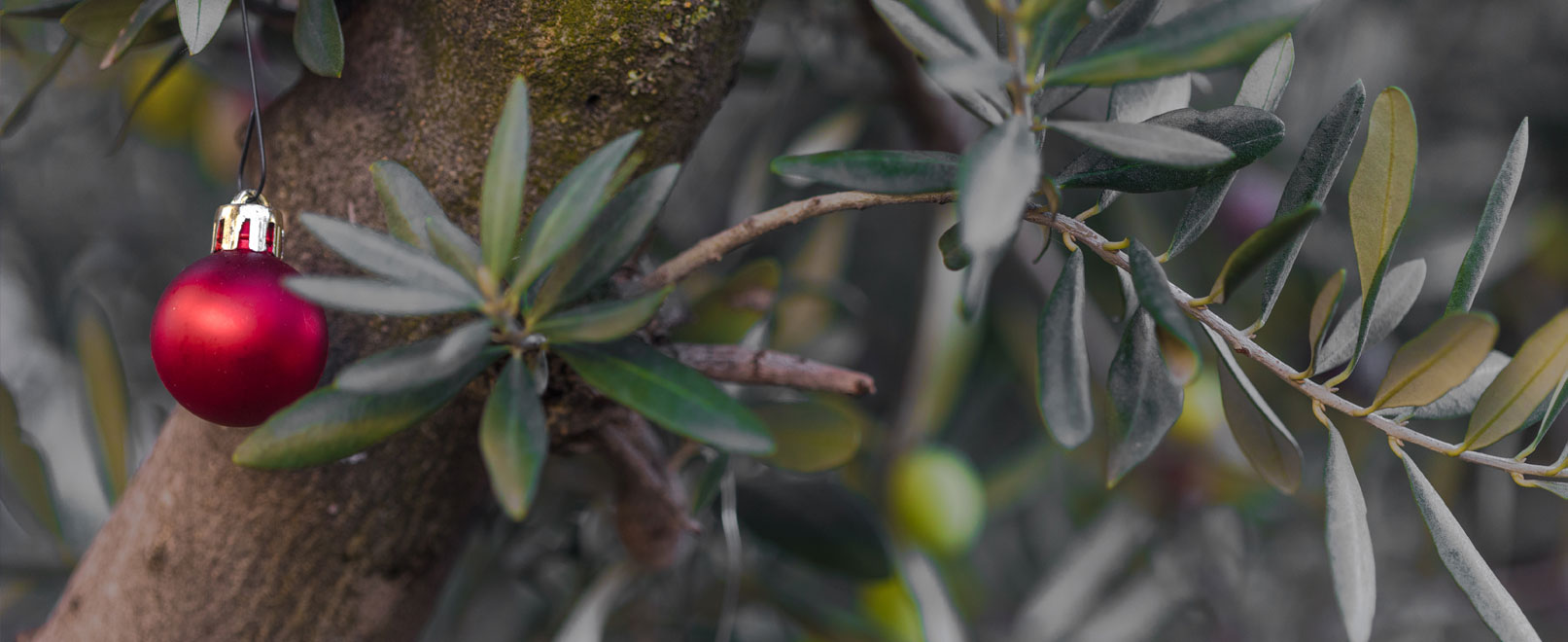
How do they celebrate Christmas in Provence?
All countries and regions have their own traditions to celebrate Christmas. This is also true of Provence, where Christmas is widely celebrated. This festive season, known as the Calendal period, runs from 4 December until Candlemas. There are lots of events and activities during this period: visiting Christmas markets, fairs with Christmas figurines, nativity scenes, and strolling through villages beautifully decorated with lights, to name just a few. Discover the different steps that make Christmas in Provence a magical time.
Saint Barbara’s Day
In Provence, on 4 December it is traditional to plant wheat seeds or lentils in three dishes that will subsequently decorate the Christmas table. These three dishes represent the Holy Trinity.
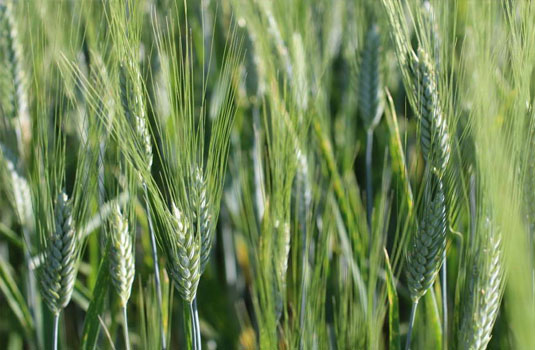

In short
If the wheat has sprouted by Christmas, the next harvest will be a good one.
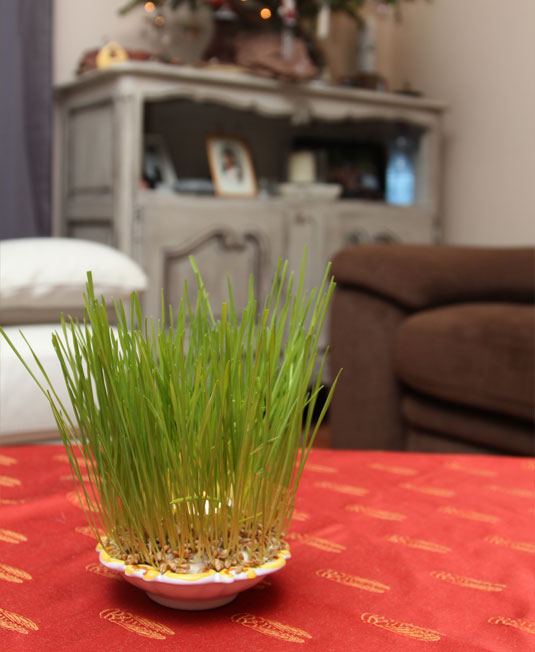
Christmas figurine fairs
Choose a santon at the Christmas figurine fairs
Christmas figurine fairs are incredibly popular in Provence. Every year from mid-November, santon markets pop up everywhere. Santons are little clay figurines from the Nativity scene. There are many different types of santons: large, small, (sometimes even so small that they are known as santons-puces (literally “flea-size”!), young, old, painted, dressed, etc. A whole mini-world to discover!

Did you know?
The santons remain in the Nativity scene until 2 February, Candlemas day.
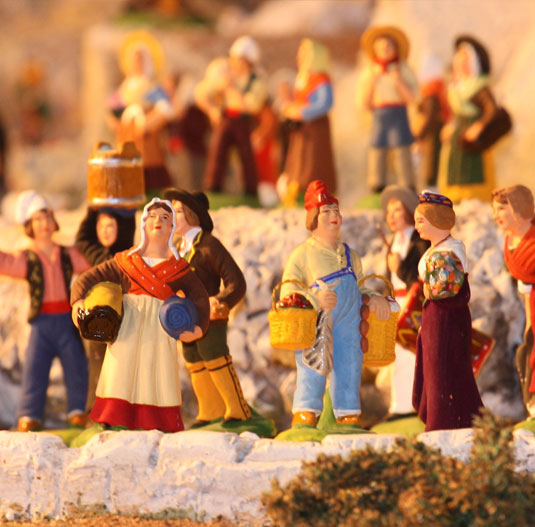
Christmas markets
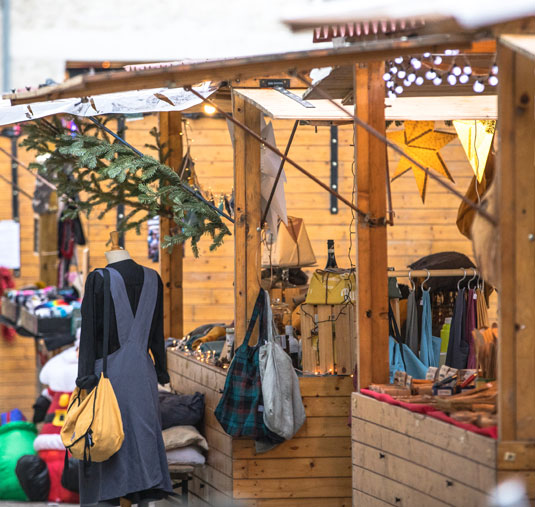

Top tip
Choose craft markets to find the perfect gift idea!
For a real Christmas feeling
At the start of December, Christmas markets spring up all across Provence. There is one in almost every town. The Christmas markets are wonderfully decorated and give you a feeling of warmth. You can buy all kinds of Christmas items there, while enjoying a glass of mulled wine (or a cup of hot chocolate ). And if you are looking for beautiful Christmas presents or local produce for your festive meals, the markets are also the perfect place to go.
Christmas Eve
Setting up the Nativity scene
24 December is Christmas Eve. The nativity scene is created that evening but Jesus is not yet present. He only arrives after midnight, after mass, for which everyone stays up. In certain villages, there is also a Living Nativity, in which several inhabitants play one of the protagonists in the nativity scene.
On Christmas Eve, you eat the Gros Souper (big supper) dinner, a meal that is (paradoxically) light and meat-free, ending with the 13 desserts that are enjoyed on your return from Midnight mass. The table must be set with three white tablecloths in reference to the Holy Trinity and there is always an extra place set for a poor person or vagabond passing through.
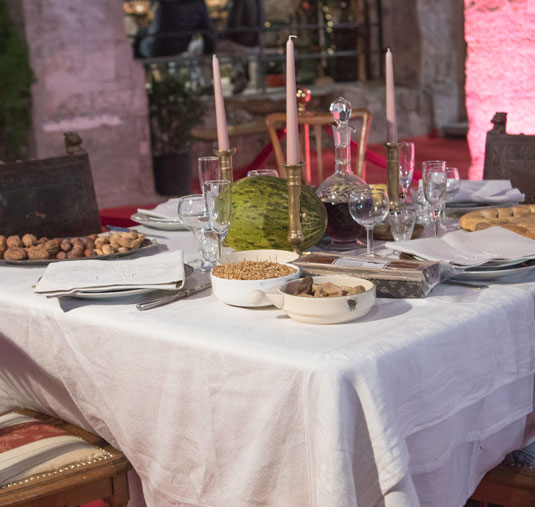
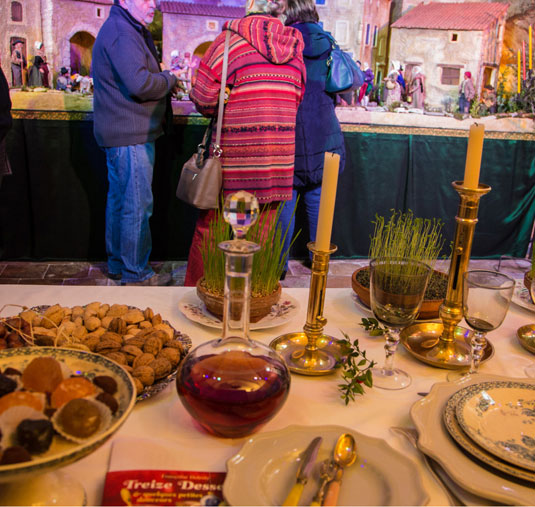
The calendal table 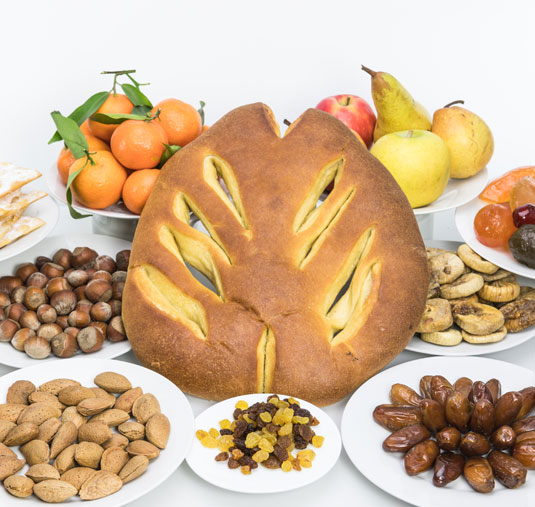
The 13 desserts 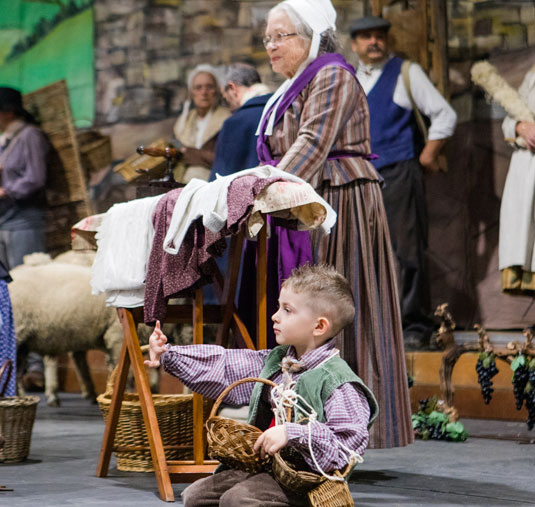
A living nativity scene
Cacho-fio
The least well-known tradition
In some families, an old tradition for the day before Christmas lives on.
Before the Gros Souper, the oldest and the youngest person in the family choose the finest and the largest log from a fruit tree that has to burn for three days and three nights. In front of the fireplace, the oldest person performs the “cacho-fio” ceremony.
The ceremony generally takes place in the Provençal language. For those who do not have a fireplace, there is a solution: an edible Yule log

In brief
The oldest and the youngest person in the family therefore choose the finest and largest log from a fruit tree. The oldest person blesses it with fortified wine and recites Dieu nous fague la gràci de véire l’an que vèn, e se noun sian pas mai, que noun fuguen pas mens !,
“By God’s grace, let us see in the New Year, and if we are not more, let us not be less.”
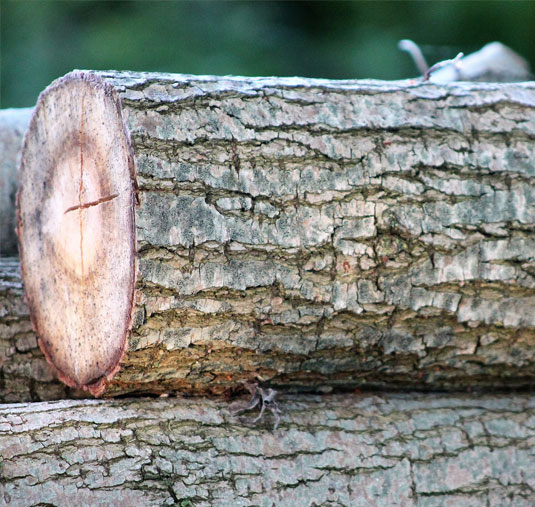
Christmas Day
25 December is the day for children. When they wake up early in the morning, the Christmas tree has been decked with presents all around it. The day is spent as a family, with walks, games and festive meals.
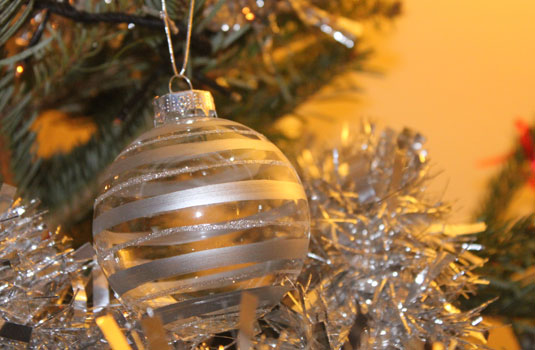

Bon plan
The Christmas “Insolites” in Carpentras events programme makes it easier to wait for Christmas!
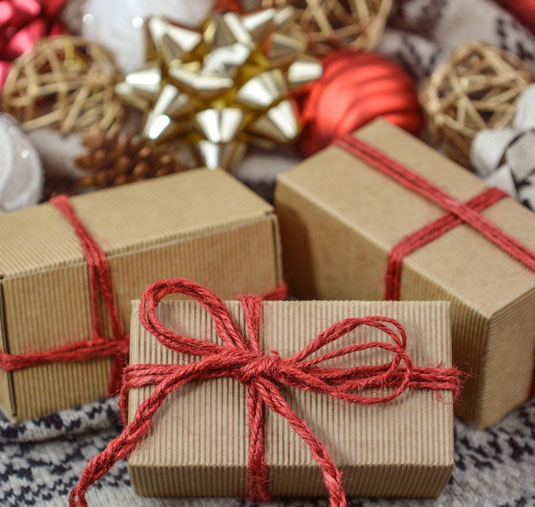
New Year’s Eve and New Year’s Day
To bring the year to a beautiful close
There are lots of festivities in Provence, especially in the big towns. However, many Provençal locals stay at home with their friends and family. Of course, it has to be accompanied by a good meal, at which you will find Pompe à huile: Provençal bread made with olive oil, orange blossom water, lemon and orange zest.
1 January is a public holiday in France. On this day, Provençal natives visit their family and friends to wish them a happy new year. New Year wishes are exchanged until 31 January.
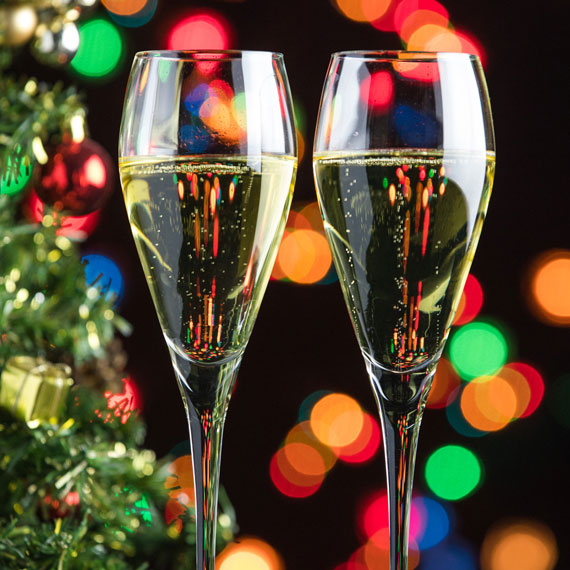
Epiphany
With the King Cake
Epiphany takes place every year on 6 January to celebrate the arrival of the three Wise Men, announced in the village with pipes and tambourines. Provençal natives eat a King cake in their honour. It is a beautiful golden brioche crown flavoured with orange blossom water that the best pastry chefs fill with candied fruit… from Apt or Carpentras, of course!

Did you know?
The puff pastry frangipane cake (eaten by “Northerners”) is known as “La Parisienne” in Provence.
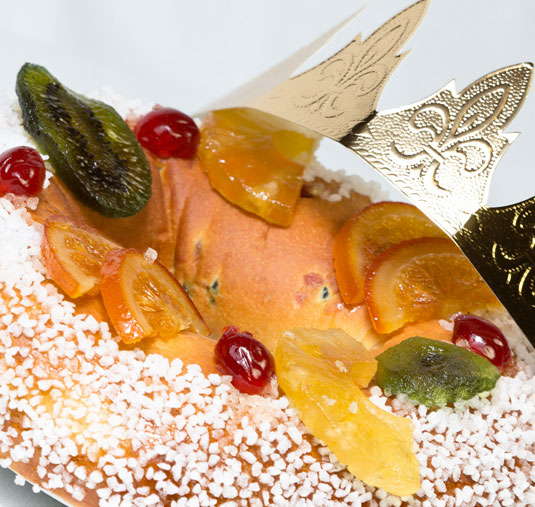
Candlemas marks the end of the Calendal period
On 2 February, it is time to put away the nativity scenes and figurines.
Candlemas is celebrated by eating pancakes whose shape is reminiscent of the sun, which is evoked to bring about the return of spring.
To respect the tradition (and guarantee prosperity for yourself ), you have to hold a piece of gold in your left hand when making the first pancake, while tossing it with your right hand.
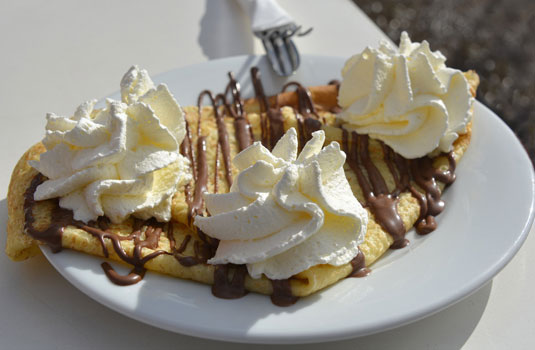

Did you know?
Le mot “Chandeleur” vient de chandelle qu’il était de tradition de faire bénir durant la messe avant de la ramener à la maison en veillant à la garder allumée.
